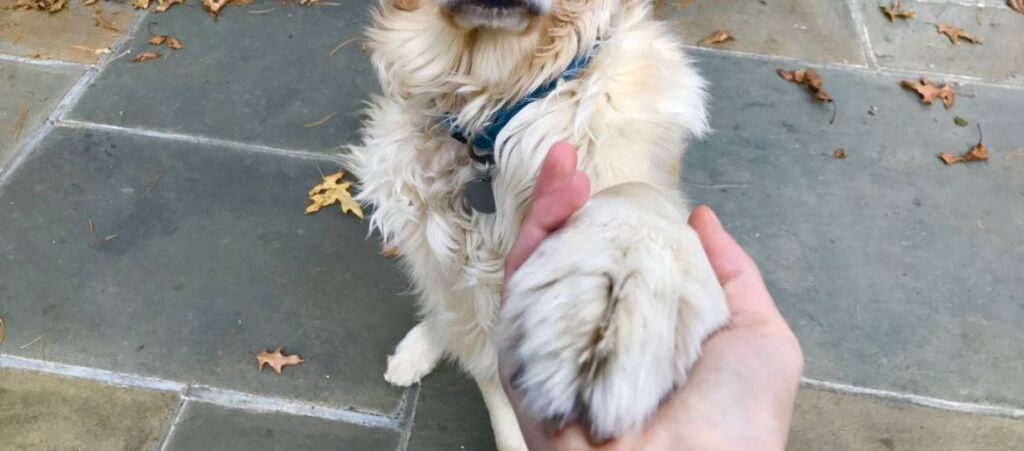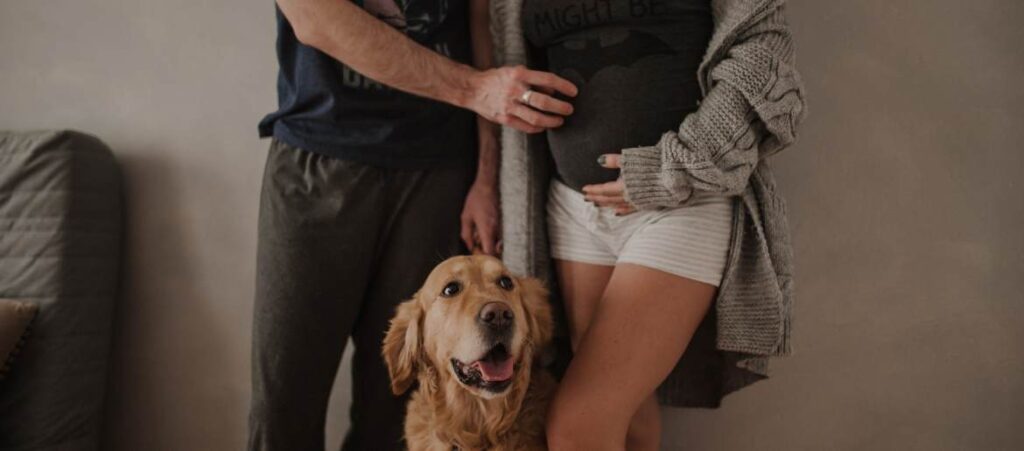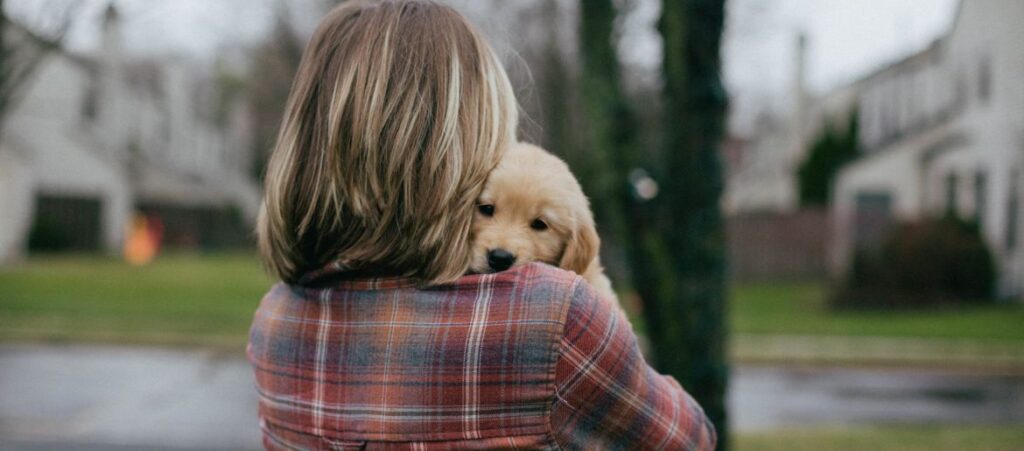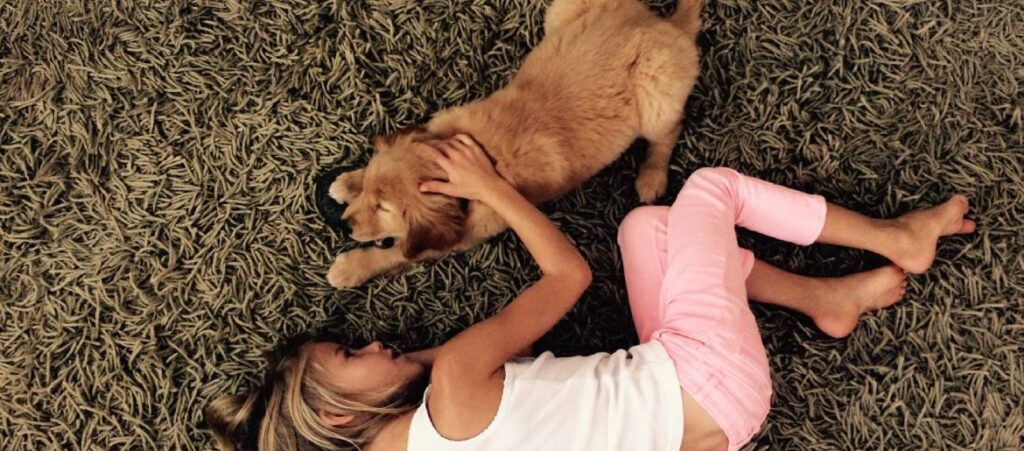Owing to their intelligence Golden Retrievers are the 4th most popular dog breed in the USA, the best family dog, and a perfect companion for kids. Yet, they cannot talk that develops a communication barrier between humans and the Golden Retrievers. Therefore, the dogs use different body language to show us how they feel and what they want of which pawing habit is also one. But why do Golden Retrievers put their paw on you?
However, there are various reasons why Golden Retrievers put their paw on you. The dogs show pawing behavior to get attention, food, toys, and treats, whereas sometimes it is a sign of apology for their mistake. Besides these, excessive pawing also indicates that the Golden Retrievers are unhappy, aggressive, or urgently need something you have.
Moreover, they show different body language to explain to the owner what they want because of their intelligence. If you are the owner of a Golden Retriever, are you familiar with all those body languages?
Even if you are not, I will disclose some of their body language that might help you.
What Are The Different Body Languages Of The Golden Retrievers?
Since the Golden Retrievers cannot speak our language, the only way to communicate with them is through different commands. And, their way of telling us what they feel or want is through their body language. Furthermore, each Retriever may show various body language in different situations according to their nature.
However, the most common body language that your pet may show in the different situation is:
Nervousness Language
Generally, the Golden Retrievers show different behaviors when they are stress, nervous, or uncomfortable. They indicate their anxiety and insecurity through various signs. Some of these signs are:
- Drooling
- Sweaty paws
- Intense and direct eye contact
- Yawning
- Lip licking or tongue flicking
- Tense jaw and freezing of body
- Barking
Deference Language
Golden Retrievers show deference language avoid injury, threat, and survival. When they perceive bad intentions from another animal or human, they will give different warning signs to keep the threat away from them. The general signs that they might show while protecting themselves are:
- Turning of head
- Lowering and curving their body
- Hanging of tail
- Licking their lips
- Averting their eyes
Anticipatory Language
Golden Retrievers are a curious and enthusiastic breed. Therefore, they become excited about small things. However, the body language that they show during curiosity are:
- Tilting their head to one side
- Lifting their front paw
- Closing the mouth
- Circling you
- Jumping and barking
Displacement Language
Commonly, the Golden Retrievers show displacement language to keep calm and divert the attention of their threat. Whenever the pets get nervous and uncomfortable, they release their frustration and refocus their threat attention with different body language. Some of them are:
- Sniffing the ground
- Sneezing or yawning
- Spinning or pacing
- Scratching
- Nose licking
- Yawing
- Chattering teeth or shaking
Defensive And Offensive Language
When the Golden Retrievers defend themselves from actual perceiving threat, they show some signs to keep their threat at a safer distance. And, these signs are:
- Leaning their body forward
- Tense mouth with intense eyes
- Growling and pushed lips
- Wagging of tail
- Hard and intense stare
- Air snapping
Relaxed Language
Golden Retrievers relax and feel secure when they are with their favorite person. Generally, the dogs like communicating, playing and enjoys their surrounding when they are calm and relax. The prominent signs of a calmer dog are:
- Relaxed and pleasing eyes
- A slight opening of the mouth relaxing the tongue
- Calmer and pleasing facial expression
- Fast wagging of the tail
- Turning over and rubbing their belly
Were you familiar with all these languages before?
I hope this information will help you in bonding with your pet.
Furthermore, the pawing habit of the Golden Retriever tells a lot about the mood and behavior of your pet. Thus, let us focus on the specific information that pawing gives.
Why Do Golden Retrievers Put Their Paw On You?
Among the various body language of your Golden Retriever, putting their paw on you is an innocent way of asking for your attention. However, there are many reasons behind the pawing behavior of the Golden Retriever. And, some of these reasons are:
Golden Retrievers Put Their Paw On You, Asking You To Play With Them
Golden Retrievers love to play. Moreover, they are so energetic that they can play all day. However, if your pet puts its paw at your face, it means that they want to interact with you and play.
Furthermore, the Golden Retrievers might circle you, lick you and hug you if they want you to play with them.
When They Want Something, Golden Retrievers Put Their Paw On You
Generally, Golden Retrievers are very possessive about their toys. Thus, they don’t like sharing. Therefore, whenever you hold their toys, they put their paw on you until you return their toys.
Apart from this, putting their paw in your hand indicates that they want something you have in your hand.
Golden Retriever Put Their Paw On You When They Are Hungry
Golden Retrievers love food. Thus, they cannot resist when they approach near food. If Golden Retrievers put their paw on you while eating a meal, it means they also want your food.
I know that your pet masters the acting of pleasing you. Yet, you should be conscious of the human foods that may degrade the health of your pet. Some of the foods that are harmful to your Golden Retriever are:
- Grapes and Raisins
- Scallions
- Raw or uncooked meat
- Chocolate and coffee
- Onions
- Garlic
- Avocados
- Sodas
However, you may sometimes forget to feed your pet. Thus, the pet may put a paw on you to remind you.
Golden Retrievers Put Their Paw On You, Asking For Forgiveness
Golden Retrievers are smart and intelligent dog breeds. Thus, they can understand human emotions and knows when they have let their owners down.
Since their owners are the favorite people of the Golden Retriever, they never hesitate to ask for forgiveness whenever the pets do something wrong. Therefore, putting their paw on your, touching your hands and legs is a way of pleasing you and apologizing for their mistakes.
When They Need Attention, Golden Retrievers Put Their Paw On You
Golden Retrievers love it when we give them attention. And they can do anything to gain the attention of their owner. However, sometimes when you get too busy with your work and fail to give them attention, they start craving for your love and care.
Therefore, the Golden Retrievers put their paws on you, jumps, rolls on the ground, and lick your face to seek your attention and care.
Golden Retrievers Put Their Paw On You To Accompany Them
Since Golden Retrievers are the best family dogs, they enjoy social gatherings and being around people. Whenever they feel lonely and alone, they might run towards you and put their paw on you.
Therefore, touching your leg, putting their paw on you, making soft eye contact, and following you are their ways of seeking your attention for accompanying them. Besides this, the dogs always want their loved ones nearby. Thus, pawing you might also be their appeal be with them.
When The Golden Retriever Wants To Go On A Walk With You
The Golden Retrievers are a highly active and energetic dog breed. Thus, exercising, training, and playing might be their favorite activities. And, since the Golden Retrievers bond stronger to a person, they will always wait for the chance to do their favorite activities with that specific person.
However, sometimes you may fail to give your pet enough time. Thus, the Golden Retrievers might put their paw on you to go on walks with them. Besides pawing, they may drag you, pull you, jump in your lap and wage their tail as a sign to take them on a walk.
Golden Retrievers Puts Their Paw On You Asking For Reward
Everybody likes rewards, do not they? And especially the pets always look for the rewards as treats after they complete their task given by their owners. Furthermore, different training sessions teach them various good habits and behaviors (like potting training, diabetes assistance, blood pressure assistance, etc.).
However, you may not always be around them when they do something good. And since the dogs are smart enough, they know their brilliant work could reward them. Therefore, they may run towards you and put their paw on you for treats or rewards.
Although rewarding them is a positive way of encouraging them, you should be careful about the treats you give as rewards. Generally, natural snacks can be the best and healthiest reward for your pet.
Does your pet put its paw on you? Why do pets put their paw on you?
Does your answer match the above reasons? Or you have something to add to this list?
Though we think of pawing as positive behavior and friendly gesture, excessive pawing may be problematic.
Golden Retrievers Put Their Paws On You Excessively, Is This Problematic?
Undoubtedly, putting their paw on you is a natural and kind attribute of your pet to seek your attention. Yet, excessive pawing results in various problems. The problems are:
Cause Aggression Of Your Golden Retriever
Pawing is a medium of communication between you and your pet when they want something from you. And since the dogs are stubborn, they keep putting their paws all over your body when you fail to respond to them or fail to give them what they want.
However, if this continues, the pet loses its temperament and becomes aggressive that might hurt or injure you.
You can read the article- Why Is My Golden Retriever Aggressive? Identify And Fix It, to manage the aggression of your pet.
Results In Bacterial Infections
Since the Golden Retrievers are very energetic, they roam and runs around. As a result, they may bring various bacteria and germs with them in their paws. Eventually, these foreign particles will infect you when your pet puts its paw on you and degrade the health of both you and your pet.
However, some visual inspection that helps to detect the paws of your pet does not have bacteria are:
- Absence of swelling and redness
- No foul-smelling discharge and drainage
- No pain and itching
Therefore, to keep your pet and yourself away from bacterial infections (Canine pododermatitis), you should clean the paws of your pet daily.
Leads To Dangerous Consequences
You might think that pawing habit is cute. But, if you fail to manage and control this habit, it may become life-threatening. The nail-filled paws of your Golden Retriever have the potential to harm others.
In general, the dogs have their big claws to protect themselves from threats and to fight. Therefore, when your pet fails to get what they want, they continue pawing. And their paws can rip the clothes and scratch the skin. If this continues, it eventually leads to life-threatening consequences.
Pawing At Guests And Kids
Unlike adults, the skin of kids is very soft and vulnerable. Therefore, if you fail to train your pet and control their pawing habit, there are high chances that the pet may hurt the kids.
Similarly, strangers may be unaware of the behavior of your pet. And, when the dogs put their paws on the strangers, they may suspect it as a threat. Thus, the stranger becomes nervous or anxious attacks, in defense, hurting the pet and themselves.
Therefore, management of pawing habits is essential.
But, who can you manage the pawing behavior of your pet?
How To Control The Excessive Pawing Habit Of Your Golden Retriever?
Although pawing seems like a cute behavior of your pet for drawing your attention, excessive pawing can lead to fatal consequences. Therefore, managing the pawing behavior through proper training is vital.
Some of the tips and tricks to manage the behavior are:
- Ignore the unasked and useless pawing behavior of your pet
- Train your pet to give its paw only when asked
- Relace the pawing habit with some other behavior
- If your pet paws you while petting, stop petting and command your pet to stop pawing.
- Give time to your Golden Retriever so that it does not feel bored or ignored.
- Do not reward the dogs when it paws. Instead, ignore and walk away.
- Avoid yelling or negative reinforcement and gain the trust of your pet while training.
Furthermore, the Golden Retrievers start putting their paws on you since the puppy stage. Therefore, training them to stop pawing from an early age will be easier and effective.
Your bond with your Golden Retriever becomes strong if you start understanding and responding to its body language. And, I hope this article will help you in bonding with your pal.
14 Clues For Better Understanding Of The Behavior Of Your Golden Retriever?
However, all Golden Retrievers do not sign similarly in the same situations. Each Golden Retriever may show different behavior in different conditions depending on their nature. Yet, some of the clues for understanding the behavior of your pet are:
- Golden Retrievers shake to relieve stress and tension. However, shaking after bath is for removing excess water and after playing is to remove dirt, dust, and foreign particles from the coat.
- When your pet turns its back on you, it is showing you that it trusts you.
- The pet asks for food or toys by raising one of the front paws.
- Your pet is showing dominance when it put one front paw in your knees. You should look into the eyes of your pet and remove the paw in such a situation.
- When the Retriever wants attention, it touches the hand of the owner with its nose.
- Rolling and exposing the belling by the dogs indicate that they trust you.
- The dog is protecting its territory and food when it exposes its teeth without snarling.
- Golden Retriever licks his face during anxiety, stress, or danger.
- Generally, yawning indicates that your pet is nervous or grumpy. But if your pet yawns after you, it means that the pet adores you.
- Squinting and blinking of eyes by the dogs means they want to play.
- The wide-open eyes of your pet denote a challenge.
- Golden Retriever tucks its tail between the legs when it is nervous, uncomfortable, or nervous.
- Raised and moving the tail of your dog means he considers himself as the in-charge and holds the authority.
- Retriever drops his tail and rapidly wages it during the confusion.
What were your challenges while training the pet?
If you have any suggestions regarding this article, please comment below.





